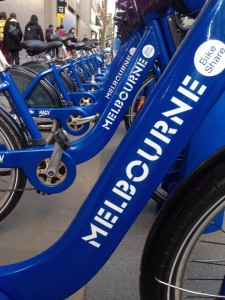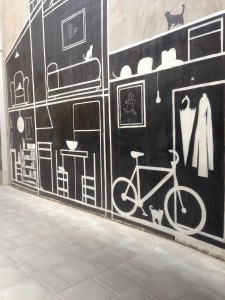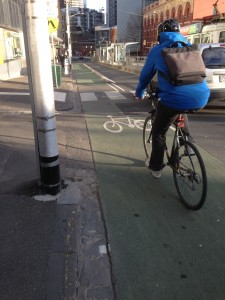‘The Scene’, Semester 1, Media 3
It was the first class of the semester when Paul gave us a camera and a script and said film one shot to cover this. Little did I know that this would be the beginning of such a fulfilling journey that has lead me to discovery the art of filmmaking. I realised in this class how interesting it was to see how differently or similar a text/script was perceived and interpreted. Just from attending the first week of ‘The Scene’ I took away points that have stayed with me throughout this journey, those being, the individual style of the director impacts a film significantly; this course is about individual research and practice; we all have to work with constraints, and this is where the creativity can come from; and a coverage of a scene is cinematic and the way it it made has its own meaning.
A huge part of my journey in The Scene is learning by practice. Exploring this has been an exciting, educational and fulfilling experience both personally and professionally, that has influenced my future filmmaking. I was intrigued to see how learning by practice would help in finding my own Method of Working, and from doing this I found out what I was good and bad at, but most importantly what inspired me to continue. The majority of this semester was about experimenting, so that you could reflect upon this, research, think, and then create something better. It was a process that you would do weekly, by falling down to the bottom and climbing your way back to the top. This was how I formed the basis of my method of working, which lead me on a specific path of scene coverage. Before I came to the making stage, I came across a quote by David Bordwell that inspired my creative process. ‘I, a machine, am showing you a world, the likes of which only I can see’. My interpretation is that the director has the power to determine the story and expectations for the audience to follow. I have the power to show people what I want them to see, and I have started doing this through the investigations of external composition.
Before getting to the stage of knowing what my method of working was, I went through a research stage and blogged about every step that I took. It was all about reflecting on your work and researching others’ work and film methodologies. Reflection involves the notion of thinking and learning, as we reflect in order to learn, and therefore we are learning from reflecting. We go through a mental reflection. It is a process with a chosen medium, where we shape and model the content of our reflection into reflective writing.
I started with the thought that filmmaking is a higher order of thinking. You have to think at a higher level to cover a scene successfully and have the greatest impact. From the first couple of scenes that were shot, I started to head down the path of framing, which opened the door to the backbone of filmmaking. I went through stages of decoupage, Mise-en-scene, and montage, then narrowing down my search to something more confined. Framing is carefully considered by the filmmaker to create powerful cinematographic techniques, and allows the director to create a dynamic composition that engages the audience, highlighting the most important features. It defines both onscreen and offscreen space, that creates a vantage point that will create a specific distance, height and angle. The framing will change, depending on what is being filmed.
After filming scene after scene I wanted to focus on something more particular, something that intrigued me. This is when I came across the idea of external composition. It is a form of compositional relationships that is the momentary relationship between one shot and the next. It is commonly used when a character walks out of one shot and walks into the next shot in the same place. To understand this more I researched continuity and the 180 degree rule. This helped me with my investigations, as I wanted to see what was the most successful in scene coverage.
As I went further into the semester I started filming scenes that I had chosen and that I was directing. This was the best way to put my investigations into action, and see it all come to life. This was met with many successes and failures, however that is the beauty of experimenting. When I came to filming scenes in the weeks leading up to the end of the semester, and when I knew exactly what I wanted to investigate, I directed scenes that I did in class, however this time through my own interpretation. To do well in these I had to understand that planning is one of the key elements towards making something successful. I am someone who works better when I know everything that will be happening, and what everyone will be doing. When I directed my scenes I preferred planning on paper, writing everything down; and then planning with the camera. This allows everyone involved with the production to know what they are doing, when they are doing it, and how they are doing it. I conducted a substantial amount of pre-planning before my final shoots.
Through learning by practice, I have learnt what it takes to be a small portion of a filmmaker. The way you have to think, reflect, and learn as the process advances. Personally, the most beneficial part to this semester was all if it, as I started at the bottom, and although I might be a long way from the top, I have confidence in what I have achieved as a director for those scenes. The thinking, reflecting and creating processes that were done throughout the semester helped with that. You don’t just film something because it looks nice, you film it because it is the best way to cover that individual shot, and will compliment the scene dynamic.





